Let’s talk about Epigenetics… Food has a very powerful influence over health, but having a carrot juice is not going to motivate your innate vitality to self-cure…
In the last blog, “You Are What You Eat?” we raise the question about the proper, contextual interpretation of the Hippocrates’ pseudo-quote, “Let thy food be thy medicine, and thy medicine be thy food.” I’d mentioned that most likely something was ‘off’ or lost in translation and that the opposite is true.
In fact, it’s doubtful that Hippocrates every really said that quote, or that he would even think it because as a leading physician/healer, he would not confuse food with medicine. [Hold on, I will explain.
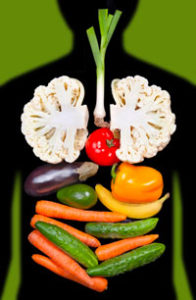 Food has a very powerful influence over health, but having a carrot juice is not going to motivate your innate vitality to self-cure multiple sclerosis or Hashimoto’s which the budding science of epigenetics shows us is possible. So, let’s chat.]
Food has a very powerful influence over health, but having a carrot juice is not going to motivate your innate vitality to self-cure multiple sclerosis or Hashimoto’s which the budding science of epigenetics shows us is possible. So, let’s chat.]
First, if the word “epigenetics” is unfamiliar, here are two definitions:
- Epigenetics, Quirky Definition — Science finally giving people’s bodies, minds, and Innate Vitality permission to reverse symptoms and self-cure what Medicine previously labeled an “Incurable Conditions.”
- Epigenetics, Real Definition — The study of heritable changes in gene function that do not involve changes in the DNA Sequence.
What this means is that the body can heal itself if/when the cause of the disease is corrected.
Most of what we attribute to Hippocrates comes from some 60 manuscripts, the Corpus Hippocraticum, written by his disciples. Even in the Corpus, that quote is not to be found.
The Corpus material does indeed address diet and nutrition. Things like 1) adapting a diet to the nature of a person (a bit of biochemical individuality), and 2) modifying an ill person’s diet according to their humour—Melancholic (black bile), Phlegmatic (phlegm), Choleric (yellow bile), and Sanguine (blood). Humour is a temperament or constitutional type, not a tickle in the ribs or a pie in the face).
In that sense, food would be supportive of the medicines being employed, and medicines would work better with the healing support of foods. Just makes sense. By supporting the constitution (temperament, humour), the diet would indeed serve to heal because of the ancients, diseases resulted from an imbalance in the humours. All well and good. This goes right along with Chinese Five Element and Ayurvedic Dosha theories. It’s what natural health practitioners do.
In Hippocratic healing, (a basic, kindergarten-level lesson being missed today in modern medicine), therapeutic treatments were two-fold: 1) herbs, medicines, surgeries, staunching bleeding, therapeutic agents, etc., and 2) dietary-nutrition support for the individual according to what would help balance their humours. Today, Ayurvedic and Traditional Chinese Medicine honor that approach as do modern Naturopathic practices.
To understand the context for the quote, it’s extrapolated from: “In food excellent medication, in food bad medication, bad and good relatively.” Humm. Seems there is a bit of wiggle-room for interpreting that phrase attributed to Hippocrates.
I’d interpret that as “Foods are a two-edged sword. Good foods support health. Bad foods destroy health.”
Barry Sears, in his milestone book, The Zone, (1995) revealed the super-powerful influence that the molecules elicited from fats, eiconsanoids—powerful metabolic-signaling regulators that impact cell function—were often more powerful than drugs to support health. So, it’s terrific to look at foods as important for health, and changes in the diet directly impact health.
But there are other dimensions to health. There are imbalances in thoughts and feelings, and epigenetic expressions of symptoms that require therapeutic agents stronger than foods. Hippocrates would never confuse the importance and role of sustenance VS the importance and role of therapeutic agents. He was well aware of Nature’s Law of Proving.
Law Of Proving. It’s an odd use of the word, proving. It means that if you repeatedly take a medicinal substance—or even a food that forces your body to react—you will develop unwanted side-effects. Those side-effects are the proof or the proving-effects.
At first, the substance can be beneficial; but prolonged over-use results in proving-symptoms. Or the substance can start as a poison, such as often used in modern medicine with its history of using arsenic for syphilis and mercury for gonorrhea. Anxiety and fastidious control traits are provings of arsenic as experienced by thousands of people. Unfounded suspicions and violent/destructive ideas are provings of mercury. Provings are side-effects.
In the marvelous, effective science of Classical Homeopathy, “proving” has a very specific, much tighter definition than the context presented here. It’s how the homeopaths discover what a medicinal substance can help the body cure via the Law Of Similars.
Coffee & Cannabis. For example, today, many people “prove” coffee and/or cannabis. Their bodies learn to adapt to the medicinal, herbal substance. They get some initial benefits, but chronic use often brings symptoms to susceptible people – sleep disturbances, munchies (overeating), irritability, dry mouth, and a let-down that requires repetition of the substance. Susceptibility is genetically-epigenetically determined. Some people get benefits from coffee and/or cannabis; some don’t like its effects. Each person is somewhat unique in what symptoms are proved applicable, but there are noticeable commonalities among users.
Another example. If your food included a medicinal agent such as the herb, goldenseal, it might help your body cure a sinus infection. But continued use would result in stringy, yellow mucous and chronic post-nasal drainage. By proving it, it causes what it can help cure.
Often nature makes medicinal agents taste bitter, thus removing the tendency to have goldenseal in your salad. The old, eclectic herbalists say, “The more bitter the herb, the more powerful the medicine.”
Pot Herbs. This is an old designation for foods (not the cannabis cited above). Pot herbs are plants that go in the soup pot, and serve our bodies as sustenance. Broccoli, celery, carrots – you get the idea. Over time, our bodies adapted to using these plants without incurring any proving symptoms.
In reverse psychology, humans adapting to certain plants for food has guaranteed perpetuation of the plant species—thus they perpetuate their DNA forward over time. Same for domesticated animals.
Every food, every plant, has innate adaptations to the environment and developed chemical compounds that thwart animals and insects from eating it to extinction. Roots compete underground with other species of plants and with the soil microbiome (bacteria/fungi) which are needed for plant health. Adapt and survive. Things like thorns, anti-proteolytic enzymes, volatile organic compounds, lectins, and poisons.
For a plant to be a pot herb for you, it means that your liver can easily process its self-protective compounds and render them harmless. It means that your epigenetics does not react with inflammation and alarm. Soup is good food.
Tonic Plants. Foods that qualify as tonics are in the gray-zone between pot herbs and medicinal herbs. They often serve people with a significant vitality boost and support the body to gitter-done regarding reversing nuisance symptoms.
If your mind went to Tonic Water, the Fever Tree makes a good analogy. People drink bitter tonic, aka Quinine, from the bark of the Cinchona offinicalis tree to thwart the recurring chills and fever of malaria. The herb is a tonic specifically for people who have acquired the Plasmodium parasite.
The British colonialists in India soon discovered that gin (plus a spoonful of sugar) helped the tonic go down (or vice versa depending on your predilection for herb-flavored vodka), and voila! the G&T was discovered.
Cinchona (Peruvian Bark) was proved by Scottish Physician, William Cullen in the mid-1700s, and again by Dr. Sam Hahnemann in 1790, and its provings parallel the symptoms of malaria – periodic fevers, sweats, headaches.
Germane to our topic, tonics can be called superfoods. Generally, tonics support a certain constitutional type, so they are employed in Traditional Chinese Medicine and Ayurveda to help a certain type of person ‘run smoothly.’
Today, tonic plants often end up in network marketing companies as panaceas-for-what-ails. Not individualized, they often only realize a small percentage of effectiveness to the frustration of distributors who received amazing benefits, and consternation of customers who do not.
Therapeutic Plants. Medicinal herbs are known by what they assist the body self-heal coupled with provings of what happens with overuse. This is why medicinal herbs are for occasional, therapeutic use when indicated, and discontinued when the body returns to being able to self-regulate in good health.
These plants have experienced similar suffering of adapting and surviving on earth – the quest for food, sun, water, protection from cold winds and invasive microbes. This is why plants (herbs) make such wonderful medicines. They are life forms that share elements of the human struggle to adapt and survive.
Drastic Plants. Some plants are very poisonous. Our livers have not learned to break down their self-protective compounds. Our immune systems go bonkers on encountering them. Think: poison ivy, hemlock, deadly nightshade, monkshood. So, we learn to avoid eating them.
Yet these poisonous plants can become powerful instigators of self-healing in the hands of knowledgeable, trained homeopathic physicians who are familiar with the provings of these plants—highly diluted, of course—in published studies and clinical observations over the past 200 years. To become a homeopathic medicine, an infinitesimally-small dose is employed, most often employed without even a single atom of the original plant or substance. Homeopaths adhere to Hippocrates’ prime admonishment, “Do no harm.”
Niches and Harmony. All plants on planet earth have a purpose, from sustenance (food) to various powers as medicines.
QUIRKYHEALTHTIPS
Expand your pot herbs. Mother sez: “Eat your veggies.” Far too many people eat only a severely-limited spectrum of plant nutrients, e.g. tomatoes in ketchup and iceberg lettuce that doesn’t fall off the burger.
[Note: Registered Dieticians count GMO-corn-syrup-ketchup and GMO French fries fried in GMO canola oil as two vegetables for school lunches. Seriously. So pack their lunch, please and hope they don’t trade your organic lettuce wrap for a classmate’s fried chicken tenders.]
Adopt A Vegetable. Every time you buy groceries, or at least weekly, adopt and bring home a vegetable that you’ve not had in a while. ORGANIC: turnip, rutabaga, kohlrabi, prickly pear, bok choy, jicama, Brussels sprouts, sunflower sprouts, snow pea, kale, chard, parsnip. Include a little of something new at least once a week? If you don’t like it, at least you got on the outside of one bite.
Why? Because doing so provides:
1. Your oral and gut microbiomes with new fibers—a basis for biodiversity
- Your cells with new arrangements of nutrient molecules, new vitamins, and minerals
- Your innate, epigenetic responses new considerations that broaden and exercise your adaptive horizons
- Your immune system with, perhaps, with fewer reactions (sensitivities) over time.
- Variety, the spice of life.
Even if you don’t like, or end up liking, a certain vegetable; you’ve notified your brain that such a thing exists. Don’t get painted into a dietary corner of eating the same vegetables over and over because that’s all you like. It’s not healthy. One bite is better than no-bite. Be daring, be bold, be adventuresome. Stalk the wild vegetable.


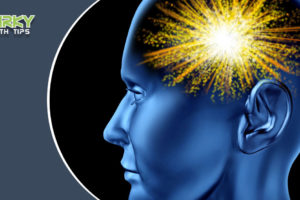


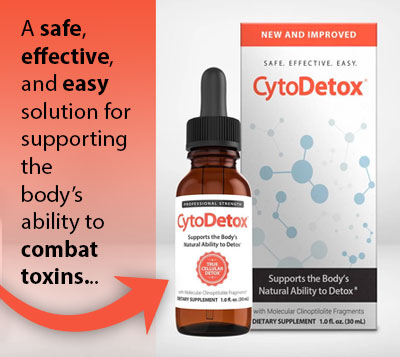

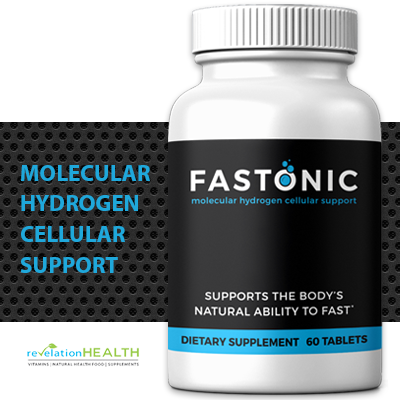
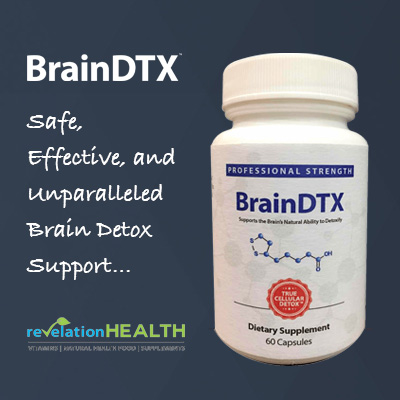
7 Comments
Leave your reply.